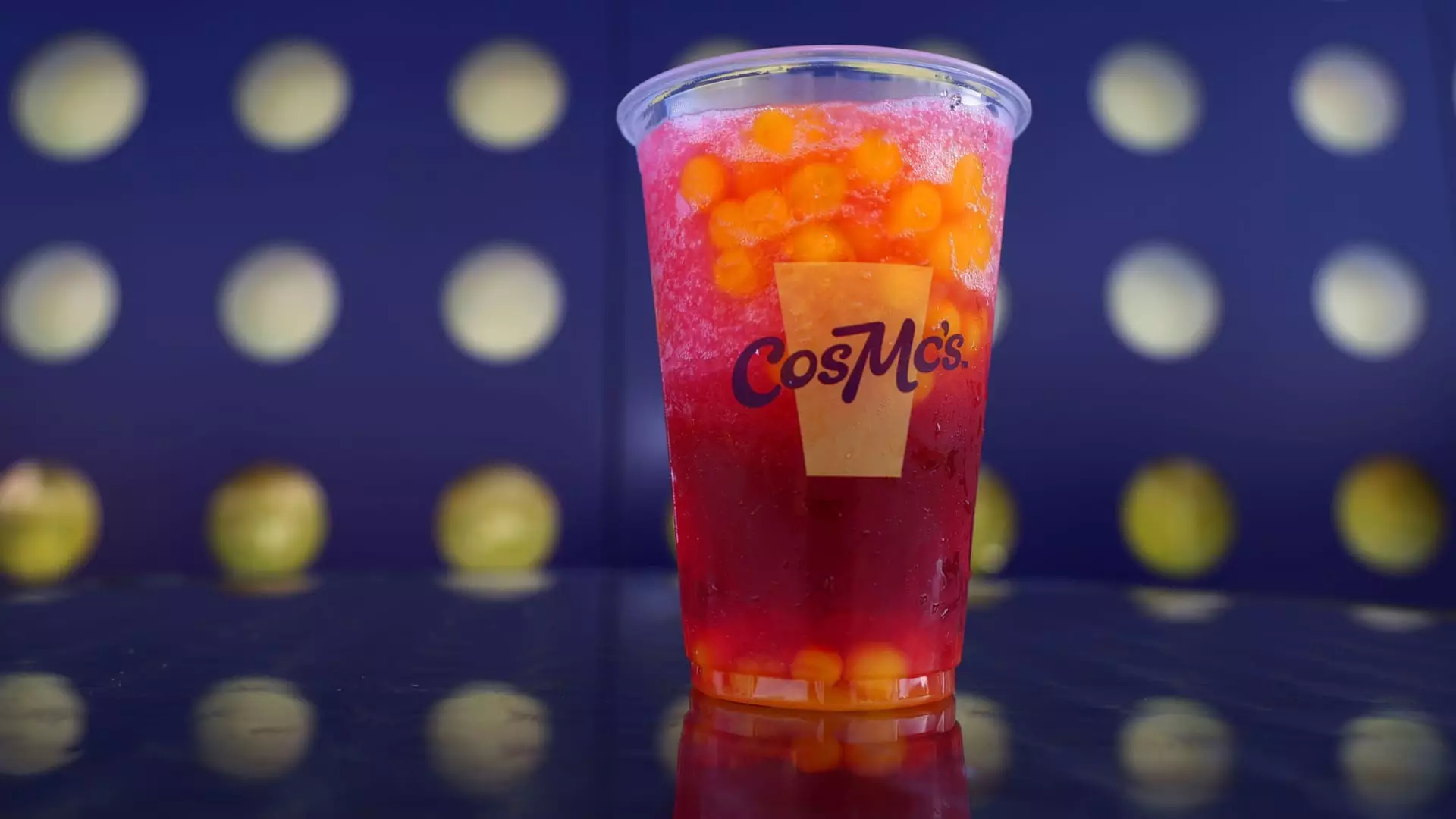The fast-food landscape is undergoing an exhilarating transformation, a surge of innovation that focuses on beverages rather than traditional food offerings. Fast-food giants like Chick-fil-A, Taco Bell, and McDonald’s are redirecting their strategies toward enticing younger consumers with whimsical and exotic drinks. This trend is not solely about filling glasses with sugary concoctions; it represents a significant shift in consumer behavior and preference. The battle for customer loyalty now hinges on refreshing beverages that promise to be more than just refreshment; they are becoming experiences.
The introduction of seasonal drinks, like Chick-fil-A’s striking Pineapple Dragonfruit offering, signals a pivot away from strictly savory menus, showcasing a willingness to experiment even among traditionally conservative brands. Meanwhile, Taco Bell’s experimental Live Mas Café in California is pushing the boundaries of the fast-food experience, combining beverage innovation with casual dining. These shifts underscore a dynamic approach to business, leveraging creativity to capture and retain younger demographic segments.
The Emergence of Flavor Explorers: Gen Z’s Taste Revolution
As fast-food chains boldly incorporate unusual ingredients and flavor pairings, they don’t just cater to palates; they tap into the very identity of Generation Z. Known for their adventurous taste and diversity, this generation stands as a beacon of change in a landscape that has long been characterized by repetitive soda and burger options. The data-driven insights from culinary analytics reveal that Gen Z is not shy about embracing new flavors, including butterfly pea or ube, creating fertile ground for chains looking to experiment with bold tropical flavors.
Brands are responding to this shift by broadening their beverage options and not shying away from audacious combinations. Wendy’s leap into novel lemonade flavors—like blueberry pomegranate and pineapple mango—is a testament to the burgeoning realization that non-alcoholic drinks can drive loyalty and engagement. Brands recognize that these offerings can tap into cultural trends and resonate well with a customer base that enjoys socializing around shared, colorful, and out-of-the-ordinary drink experiences.
Consumer Behavior: The Sweet Spot of Treat Culture
The notion of “little treat” culture, where consumers find joy in splurging on sugary drinks, reflects a larger commentary on modern consumption habits. Claire Conaghan of Datassential elucidates that younger consumers are acutely aware of sugar content yet willingly indulge in these treats because they can afford to see them as personal luxuries. This mentality reshapes how fast-food chains approach their menus, urging them to innovate in ways that deliver not just drinks but experiences that enhance social interactions.
Fast-food outlets are creating spaces that cater to this “treat” mentality, designing their offerings to be visually appealing and Instagram-worthy. As restaurants engage more with social media trends, crafting dazzling beverages becomes less of an option and more of a necessity. The implications of crafting a visually stunning drink go beyond aesthetics; it appeals to a burgeoning market that values experience as much as flavor.
Beverage Innovation: The New Growth Engine
Fast-food executives are recognizing that beverages represent a goldmine for profit margins. Unlike traditional food items, drinks often incur lower production costs and offer better storage capabilities, leading to a strategic pivot in menu design. El Pollo Loco’s and Wendy’s focus on expanding their drink selections reveals an important trend: beverages are not merely side offerings anymore; they are becoming main attractions that enhance the entire dining experience.
With profits from drink sales outstripping those of food in many cases, chains are now integrating beverage concepts more deeply into their business models. Taco Bell’s ambitious goal to build a $5 billion beverage business by 2030 illustrates just how seriously these companies are investing in the future of beverage innovation. The nascent Live Mas Café concept serves as a testing ground for extensive beverage offerings that could redefine customer touchpoints across the brand.
Beyond the Ordinary: Crafting Unique Experiences
The burgeoning trend of unique beverage pairings—such as combining horchata with coffee, or adding chewy boba pearls to soft drinks—illustrates an industry unafraid to blend and reinvent traditional offerings. As the lines between various drink flavors blur, consumers are not just receiving drinks; they’re engaging with a cultural phenomenon. This evolution presents an exciting time for culinary exploration, where ingredients once reserved for niche markets can rapidly ascend into the mainstream.
As fast-food chains venture further into experiential offerings, they craft moments that encourage patrons to linger longer and share their adventures with friends. The landscape is shifting, and for brands willing to embrace and adapt to these changes, the rewards are considerable—not just in profit, but in consumer engagement and loyalty.
By reimaging their drink offerings, fast-food chains are forging not just menus but narratives that resonate with increasingly adventurous customers thriving in the digital age. In this passionate dance between restaurants and consumer trends, the beverage revolution signifies that the future of fast-food is brighter—refreshed with unprecedented flavors and innovative experiences that have the power to unite and define generations.

